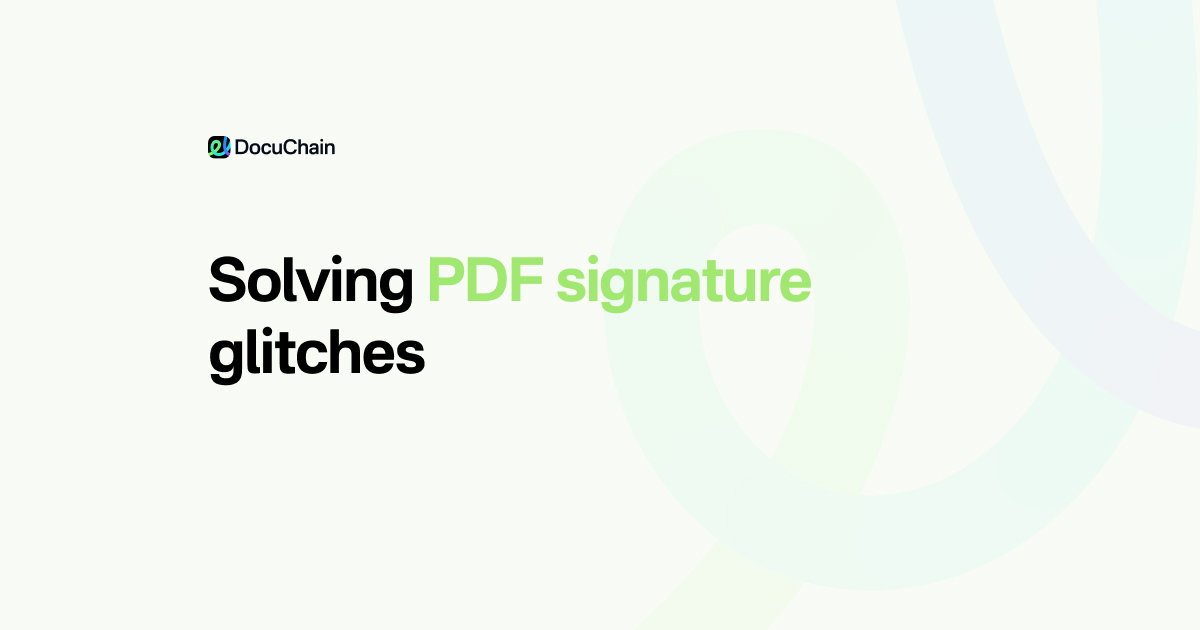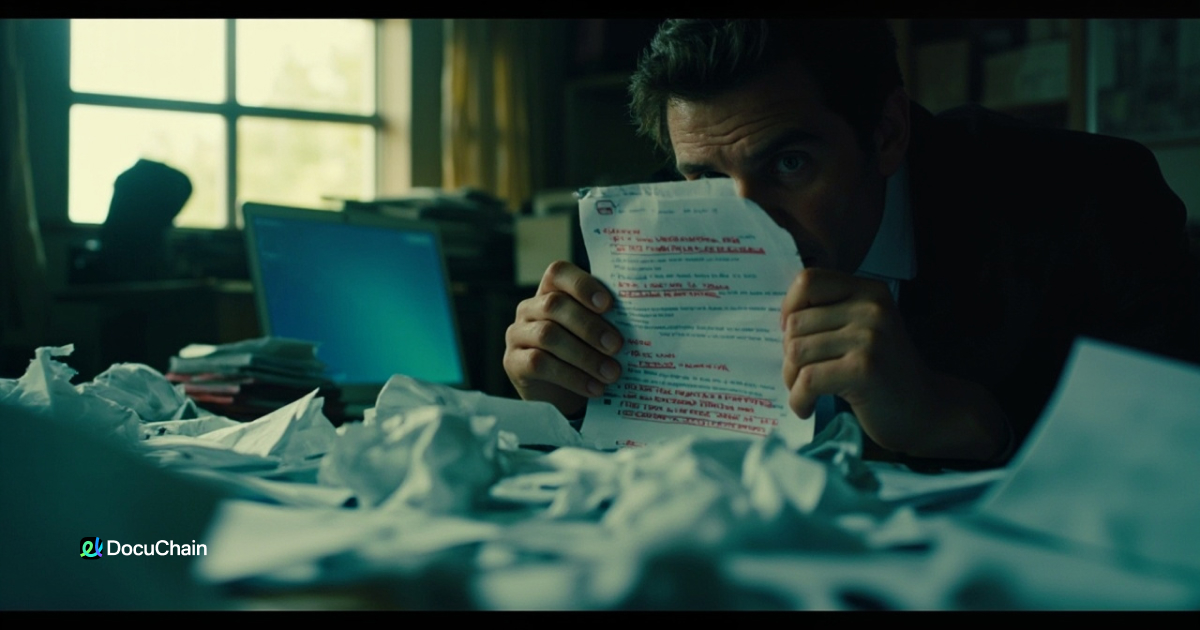
You send a PDF to a client and hear “I can’t sign it” – one of the most common sign pdf issues. This article digs into real-world hurdles:
Acrobat freezes, missing signature layers, locked files. And shows how DocuChain uses email links to make signing reliable every time.
Acrobat crashes
Many users report that Acrobat Reader or Pro crashes when they click “Sign.” A popular hack is disabling Protected Mode, but that often fails.
Reddit threads show this is common. DocuChain avoids it by sending users into a browser-based signing flow through a secure email link, no desktop apps involved.

Signature disappears after save
Another common scenario: you sign a PDF, save it, and the recipient opens a blank file. That happens when viewers strip out signature layers.
The usual fixes – flattening files, screenshotting, reprinting are messy. DocuChain embeds the signature at export, ensuring it's visible everywhere.
Blocked or protected files
PDFs with macros, expired certificates, or password protection often can't be signed.
One Legal and others note this as a common issue. DocuChain detects these early and delivers a clean, ready-to-sign version.

Viewer mismatch
You sign in Acrobat, but someone opens it in Preview or Chrome Viewer and sees nothing. Signature layers aren't interpreted the same.
DocuChain generates a standardized PDF so that the result is consistent across platforms.
Broken or corrupted PDFs
Corrupted or malformed PDFs silently fail in many signing tools. DocuChain identifies these, flags the issue, and offers to reseal or recreate the file before sending.
Acrobat crashes, invisible fields, corrupted PDFs — these aren't edge cases. DocuChain solves them with one thing: a secure email link that opens a browser signing session. No apps. No failures.

Create Digital Signature


Tap in area to upload your document
Drop your file or click to upload your document.















